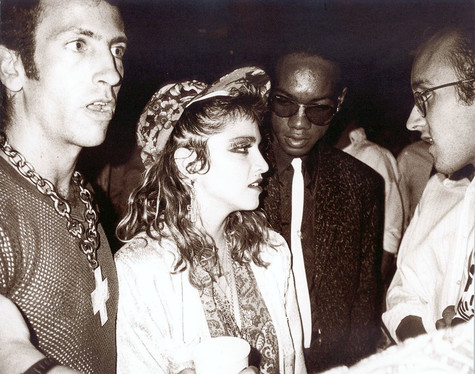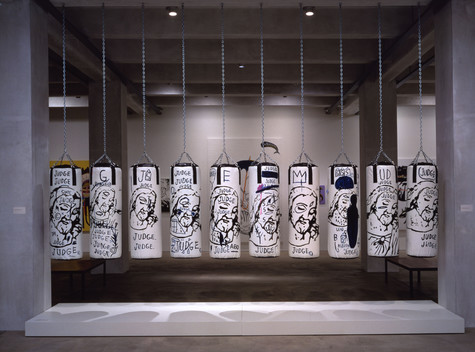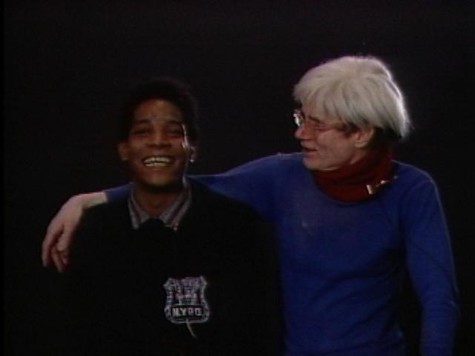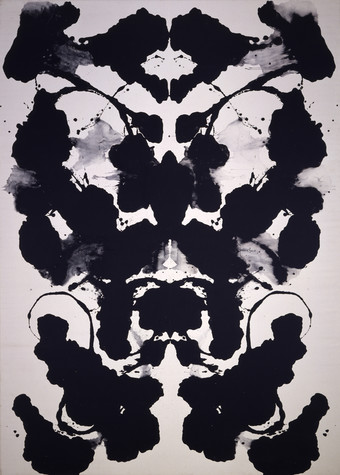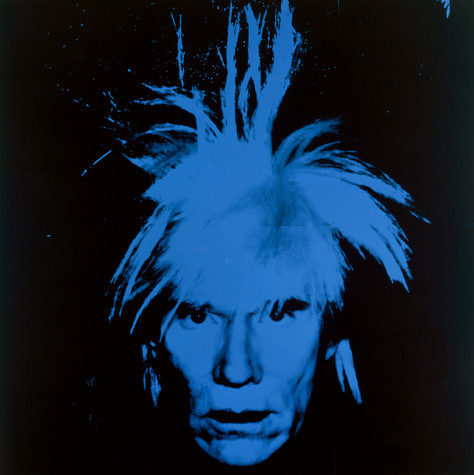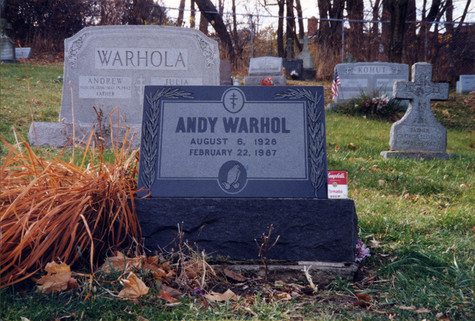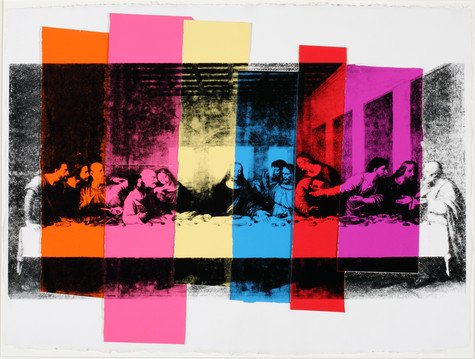1980s
Throughout his career, Warhol frequently collaborated with artists, and in 1984 he worked with young artists Jean-Michel Basquiat, Francesco Clemente, and Keith Haring. When working with Basquiat and Clemente, each artist worked independently on the canvas before passing it along, the artist’s individual marks remaining distinct and recognizable signs and logos becoming part of the compositions. Warhol also returned to hand painting with a brush in the 1980s, something he had set aside in the 1960s in favor of the silkscreen.
Warhol took an interest in television and produced two cable shows, Andy Warhol’s T.V. (1980–83) and Andy Warhol’s Fifteen Minutes (1985–87) for MTV. He also made television appearances on The Love Boat and Saturday Night Live, appeared in both print and television commercials, produced music videos, and modeled in fashion shows. Continuing his artistic experimentation, Warhol made a series of digital artworks in 1985 using an Amiga 1000.
During the latter part of his career, Warhol again experimented with abstraction. His Rorschachs (1984) and Camouflages (1986) had no identifiable subject, a notable departure from his earlier works, though they were still immediately recognizable images.
In 1984, Warhol was commissioned by Alexander Iolas—who also gave Warhol his first solo show in 1952—to create a series of paintings to be installed opposite the convent where Leonardo da Vinci’s The Last Supper is housed. This commission resulted in one of Warhol’s largest bodies of work, comprised of about one hundred works featuring da Vinci’s The Last Supper.
Nine months before his death, Warhol created a series of iconic monumental self-portraits featuring his gaunt face, fixed gaze, and a spiky wig, some of the canvases measuring nine feet square.
On February 22, 1987, Warhol died at New York Hospital in Manhattan due to complications following a surgery to remove his gall bladder. Warhol is buried next to his mother and father at St. John the Baptist Byzantine Catholic Cemetery in Bethel Park, a suburb south of Pittsburgh.
Religion
Warhol was born into a devout Byzantine Catholic family that attended mass at Pittsburgh’s St. John Chrysostom Byzantine Catholic Church. Later in life in New York City, Warhol regularly attended St. Vincent Ferrer to pray and to attend mass. As a child, Warhol would have seen the richly painted iconostasis during mass and learned about this wall of icons and their role in worship in Eastern Catholic churches. Warhol painted religious symbols using imagery such as Raphael’s Madonna, Leonardo da Vinci’s The Last Supper, and the cross as source material.
